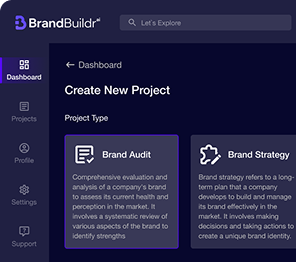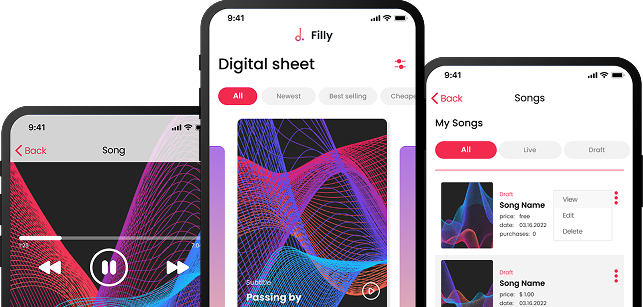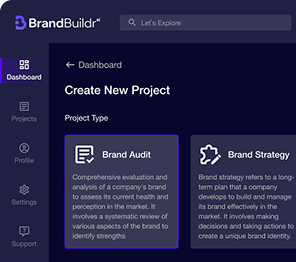If you’re building or running a tech-driven product, you’ve probably had one of those weeks.
Support tickets are piling up. Your developers are fielding API questions. Users are asking why their integration broke. And your internal team? They’re stretched thin and burning out.
That’s the moment when many founders and product leaders start asking, “Should we outsource technical customer support?”
It’s a smart question. Because, Technical Support Services isn’t just about being nice to customers, it’s about solving complex technical issues, fast. Whether you’re running a SaaS app, a connected device platform, or a developer tool, your users expect real answers, not canned replies.
And while most companies know they’ll eventually need help scaling support, many struggle with the “when” and “how.” That’s what we’re here to fix.
This guide walks you through exactly what technical customer support is, when to outsource it, what to look for in a partner, and how to keep quality high as you scale.
%20(3).jpg)
What Is Technical Customer Support and How Is It Different?
When someone says “customer support,” most people think of helping users reset passwords or navigate account settings. That’s important, but it’s not enough when your product is technical.
Technical customer support is all about solving product issues that require deeper technical knowledge. These aren’t surface-level questions. They’re system-level problems, ones that often involve APIs, error logs, code snippets, or infrastructure.
Technical support reps need to understand the product beyond the UI. They need to know how it works under the hood.
What Technical Support Teams Actually Do
- Investigate and reproduce bugs reported by users
- Help users integrate APIs and troubleshoot authentication issues
- Walk developers through configuration steps or environment setup
- Analyze logs to identify root causes
- Escalate platform issues to engineering teams with clear documentation
- Work with QA teams to test fixes and validate behavior
- Manage communication during outages, latency, or security events
The Skill Set Required
- Strong understanding of how web apps, APIs, and cloud platforms work
- Ability to read logs, headers, error messages, and sometimes even code
- Familiarity with tools like Postman and logging platforms
- Empathy for users who aren’t always tech-savvy
- Communication skills to explain technical issues in plain language
So while general customer support is about ease and reassurance, technical support is about diagnosis and problem-solving.
Customer Support vs Technical Support: Where’s the Line?
This is where many companies get confused.
In early-stage startups, there’s often just one person doing both roles. That can work for a while. But as your product matures, the gap between general support and technical support grows.
Here’s how you can start telling the difference:
%20(1).png)
Customer Support Handles:
- Password resets
- Billing questions
- Product walkthroughs
- UI navigation help
- Subscription upgrades
Technical Support Handles:
- API calls returning errors
- Webhooks not triggering
- System configurations not saving
- Performance or uptime issues
- SDK installation or version conflicts
Both roles are critical, but they require different tools, skills, and workflows.
Everyday Examples That Highlight the Difference
- A user asks how to update their email address → Customer support
- A developer says their webhook stopped sending data → Technical support
- A team can’t authenticate to your API using their OAuth token → Technical support
- A user wants to downgrade their plan → Customer support
By defining these clearly, you improve triage, speed up resolution, and make life easier for everyone involved.
When Should You Outsource Technical Customer Support?
Okay, so now you understand what technical support is and how it differs from general support. The next big question is timing. Outsourcing too early can be a waste of resources. Too late, and your team might be underwater, your customers frustrated, and your product reputation at risk.
Here are some telltale signs that it’s time to bring in outside help.
%20(1)%20(1).png)
1. Your Developers Are Spending More Time in Support Than in Code
When your engineers are answering Zendesk tickets at 2 AM instead of shipping features, that’s a red flag. Their time is too valuable to spend triaging problems, especially when specialists can do it better and faster.
2. You’re Getting More Support Requests Than You Can Handle
Growth is great. But if every new customer adds pressure to your support pipeline, you need help fast. Outsourcing can help you catch up and keep up.
3. Your Product Is Gaining Complexity
If you’ve launched a new API, added integrations, or started supporting enterprise customers, support becomes more technical by default. Generalists won’t cut it anymore.
4. You’re Scaling Globally and Need 24/7 Coverage
Your customers aren’t just in your time zone anymore. That means issues happen at all hours. Outsourcing helps you cover weekends, nights, and international time zones without burning out your team.
5. You’re Preparing for a Big Launch, Fundraise, or Milestone
Nothing kills a product demo faster than an unsolved support issue. If you're ramping up for something big, having a technical support partner ensures your customer experience doesn’t suffer while you scale.

How to Choose the Right Outsourcing Partner
So you’re ready to outsource. Now what?
Finding the right partner is just as important as the decision to outsource in the first place. A bad fit can frustrate your users, break your systems, and hurt your brand. A good one? It’ll feel like an extension of your team.
Here’s how to choose wisely.
1. Look for Technical Fluency
Do they understand your product’s architecture? Can they troubleshoot APIs, read logs, and collaborate with engineers?
Ask about:
- Specific platforms or tools they’ve supported
- Their onboarding process for learning complex products
- Experience with SaaS, DevTools, or whatever your product is
2. Ask About Response and Resolution Times
You don’t just want fast replies, you want fast fixes. Look for partners who:
- Commit to SLAs (Service Level Agreements)
- Offer clear escalation paths
- Use real-time dashboards or weekly reports
3. Prioritize Integration With Your Team
Great outsourced teams don’t work in silos. They plug into your tools and your culture.
That means:
- Using your ticketing systems (Zendesk, Intercom, Jira)
- Communicating via shared Slack channels or Zoom
- Participating in product meetings or retros if needed
4. Demand Strong Documentation Practices
The best support teams don’t just answer questions, they improve your documentation. Make sure your partner can contribute to or maintain your internal and public knowledge bases.
5. Review Security and Compliance
They’ll have access to user data, environments, and sometimes production systems. So confirm they follow:
- GDPR or CCPA if you operate globally
- Security protocols around credentials and customer data
- NDA and access control policies
Trust but verify.
Best Practices for Outsourced Technical and Customer Support Integration
Now that you’ve picked your partner, you need to make the relationship work. That takes more than a contract, it takes systems.
Here’s how to keep communication strong, support fast, and customers happy.
1. Define Roles and Escalation Paths Clearly
Who handles what? What counts as Tier 1 vs Tier 2? When should issues go to engineering?
Write it down. Make it visual. Share it with everyone involved.
2. Use Collaboration Tools
Outsourced support should feel like it’s “in the room,” even if it’s remote. Use tools that foster real-time visibility:
- Intercom or Zendesk – Ticketing and chat
- Slack – Quick questions, alerts, and triage
- Notion or Confluence – Shared documentation
- Jira or Linear – Bug tracking and development sync
3. Set Shared KPIs
If you don’t measure it, you can’t manage it. Track:
- First-response time
- Time to resolution
- Ticket volume by category
- Bug report accuracy
- CSAT (Customer Satisfaction Score)
Review these weekly or monthly to spot trends and improve.
4. Train Them Like You Would Internal Staff
Don’t just drop documentation and walk away. Hold onboarding sessions. Pair them with internal team members. Give them access to your product.
They can only support it well if they understand it deeply.
5. Schedule Regular Syncs
Weekly or biweekly video calls can do wonders. Review feedback, update documentation, and share roadmap context. It’s the difference between “outsourced support” and “our support team.”

Final Thoughts: Scaling Support Without Sacrificing Quality
Outsourcing technical customer support isn’t just a budget decision. It’s a strategic move to protect your product, your team, and your customers as you grow.
Done poorly, it leads to miscommunications, frustrated users, and patchy resolutions. But done well? It gives you scalable support, around-the-clock coverage, and the breathing room your team needs to keep building.
The key is knowing:
- What kind of support your product actually needs
- When your internal team has reached its limit
- How to choose partners who understand both people and technology
Outsourced support should never feel outsourced. When done right, it feels like a seamless extension of your team, solving problems, delighting users, and scaling with your success. Get in touch with Codebridge and let’s build your support system together.
FAQ
When should a company consider outsourcing technical customer support?
A company should consider outsourcing technical support when demand exceeds internal capacity, support volume becomes unpredictable, or in-house teams lack specialized expertise. Outsourcing ensures customers receive fast, high-quality assistance without overloading internal staff.
How does outsourcing technical support benefit growing startups?
Outsourcing allows startups to scale support quickly, access trained specialists, and reduce operational costs. It frees internal teams to focus on product development while ensuring customers receive reliable, round-the-clock support. This improves satisfaction and retention during growth phases.
What are signs that your business is ready to outsource customer support?
Key signs include rising response times, increased customer complaints, difficulty managing multi-channel inquiries, and lack of internal expertise. If your team struggles to maintain service quality, outsourcing can stabilize operations and restore customer trust.
How can outsourcing improve the quality of technical customer support?
Outsourced providers bring expertise in troubleshooting, ticket resolution, and support tools. They follow structured workflows, performance metrics, and quality assurance processes. This leads to faster response times, consistent communication, and higher customer satisfaction.
What should companies look for in a technical support outsourcing partner?
Businesses should evaluate experience, technical expertise, response capabilities, security standards, pricing models, and communication processes. Choosing a partner with industry knowledge and strong SLA commitments ensures dependable, high-quality service.
How can outsourcing customer support reduce operational costs?
Outsourcing eliminates the expenses of hiring, training, and managing an internal support team. Companies pay only for the required coverage, often with 24/7 availability included. This cost-efficient model helps maintain service quality while optimizing the overall budget.
Heading 1
Heading 2
Heading 3
Heading 4
Heading 5
Heading 6
Lorem ipsum dolor sit amet, consectetur adipiscing elit, sed do eiusmod tempor incididunt ut labore et dolore magna aliqua. Ut enim ad minim veniam, quis nostrud exercitation ullamco laboris nisi ut aliquip ex ea commodo consequat. Duis aute irure dolor in reprehenderit in voluptate velit esse cillum dolore eu fugiat nulla pariatur.
Block quote
Ordered list
- Item 1
- Item 2
- Item 3
Unordered list
- Item A
- Item B
- Item C
Bold text
Emphasis
Superscript
Subscript





















.avif)



.avif)

.avif)


